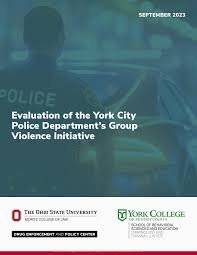By Lindsay Turner
Background
Two legal doctrines in Minnesota – aiding and abetting liability and felony murder – converge to allow anyone who contributes to a felony to be charged with and punished for murder if a death occurs during the course of the felony, even if that person did not cause death, cause any injury to the deceased, nor intend for anyone to die. Aiding and abetting liability means that people are criminally liable for the crime of another if the first person aids, advises, counsels, or conspires to commit that crime (Minnesota Statutes 2021, section 609.05). Under the doctrine of felony murder, anyone who kills another during the course of committing a felony is liable for murder, even if they did not intend for death to result (Minnesota Statutes 2021, section 609.185 and 609.195). Taken together, this means that people in Minnesota can be punished for murder when they did not kill, injure, or even intend harm, so long as they contribute to a felony, and a death results during the course of the felony (called “aiding and abetting felony murder”).
In June 2021, the Minnesota Legislature established the Task Force on Aiding and Abetting Felony Murder (Task Force) (Laws of Minnesota 2021, 1st Spec. Sess. chapter 11, article 2, section 53) in order to understand any benefits and unintended consequences of Minnesota’s aiding and abetting felony murder doctrine. The Task Force organized into three subcommittees. One to collect and analyze data about charges, convictions, and sentences under the doctrine, one to review statutes and case law across the 50 states, and one to invite input from victims’ loved ones and those impacted by the current doctrine. In November 2021, the Task Force hired Wilder Research to review literature, aid in data analysis, and write the report to the legislature. This report summarizes this task force’s work, findings, and recommendations.
Key findings:
Studies on deterrence, incarceration’s lack of impact on re-offense, and adolescent brain development raise concerns with this doctrine.
To contextualize the issue, Wilder Research staff reviewed research on deterrence, incarceration’s impact on reoffense, and adolescent brain development. Decades of studies show that the threat of punishment alone does not deter crime (Rocker, 2021), that incarceration compared to non-custodial sanctions has no impact on reoffense or tends to increase the risk that the person who experiences incarceration will reoffend (Petrich et al., 2021), and that those in their teens through mid-20s are in a unique stage of brain development that make them less capable to assess risk and consequences, and more apt to be motivated by emotion and peer pressure than those older (Dobscha, 2019; Johnson et al., 2009). With this, Task Force members were concerned that Minnesota’s aiding and abetting felony murder doctrine does not deter behavior, does not reduce the risk of re-offense, and may especially harm those in their mid-20s and younger who are held liable under this doctrine.
Young people, people charged by Hennepin County, Black people, and males with little to no prior criminal history make up the largest groups of people charged, convicted, and sentenced under this doctrine.
From 2010 through 2019, there have been 130 people charged with aiding and abetting felony murder across Minnesota, and 84 people convicted of aiding and abetting felony murder as the most severe conviction. The Task Force analyzed patterns in charges, convictions, and sentences, and found that people 25 years and younger, people in Hennepin County, Black people, and people with little to no criminal history are those most frequently impacted by aiding and abetting felony murder liability. The Task Force was concerned with geographic, race, and age disparities that have happened under this doctrine.
Recent national trends are to limit aiding and abetting felony murder liability, not expand it.
The Task Force reviewed felony murder and aiding and abetting liability statutes from the 50 states, and also seminal state appellate or state Supreme Court cases relevant to aiding and abetting felony murder liability in Minnesota and around the country. The Task Force also heard presentations about whether other common law countries apply felony murder liability. The United States is the only common law country that has not yet abolished felony murder liability generally, and past decades have seen U.S. state legislatures and review courts abolish and otherwise limit aiding and abetting felony murder liability.
Victims and those convicted under the doctrine support limiting aiding and abetting felony murder liability, with avenues for retroactive relief.
The Task Force invited connection with victims’ families through contacting 37 victim/survivor organizations, and heard from victims’ families through the Minnesota Alliance on Crime (MAC). MAC is a statewide coalition of victim/survivor advocate organizations; 75% of their membership are victim-witness programs in county attorney offices, and the rest are community-based organizations. The Task Force also heard from 10 people convicted under this doctrine, and one person who rejected a deal to plead guilty to aiding and abetting felony murder. MAC expressed support for retroactive reform such that aiders and abettors of an underlying felony are not punished for the homicidal acts of another, and said that such retroactive reforms would be supported by the vast majority of its members. Impacted individuals expressed accountability for their role in the underlying felony and shared many difficulties stemming from being held criminally liable for the homicidal acts of another. Those impacted individuals who spoke on the subject strongly supported retroactive reforms to limit aiding and abetting felony murder liability.
The adverse consequences of Minnesota’s aiding and abetting felony murder doctrine outweigh its benefits.
After analyzing the above key findings, the Task Force agreed that the adverse consequences of the current aiding and abetting felony murder doctrine outweigh its benefits.
St. Paul, MN: Wilder Foundation, 2022. 222p.





















